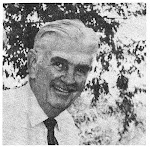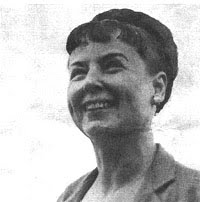 |
| May 15, 1937 World Museum diorama " |
To Holling’s résumé of achievements — storyteller, illustrator, naturalist — I’d suggest adding "marketing genius." In the 1930s, he created the World Museum. This was a full-page illustrated feature that ran in U.S. newspapers.
Subjects included the Grand Canyon, a buffalo hunt, and covered wagons. Children were instructed to cut the pictures apart and assemble them into a diorama like those they might have seen in natural history museums. Pasting them onto cardboard or stiff paper made the dioramas sturdier.
Mary Mosier has exchanged notes with me and Joan Hoffman, docent at the Holling museum in Michigan, on this elusive subject. Ms. Mosier reports, “The UCLA Library also appears to have working drawings of some World Museum subjects in their collection of Hollings papers.” UCLA’s descriptions and other Ms. Mosier found include these subjects that appeared in the papers: Ancient Minoan bull jumpers in an arena, undersea exploration with divers in hard suits, tropical jungle plants with explorers in pith helmets, Buffalo Bill Cody (uncertain if this features the wild west shows or Cody's early life.), cavemen scenes, pioneers or tradesmen in Conestoga wagons, reptiles, Holland, Poland, Spain, China, France and India.” She is also uncertain if the national features focused on historic or contemporary scenes.
She comments, “From what little I have seen, the World Museum dioramas were exemplary examples of a type of educational play that seems to me to stem from the public museum dioramas of figures and specimens. Given his work [Holling did] for the Field Museum this seems very natural to me. The high quality and serious purpose that seems to be displayed in the examples of the World Museum I have seen are only what one would have expected from Hollings.”
Newspapers are becoming ephemera that are rarely saved. Making the archival task more difficult, the World Museum features are often referred to as “comic strips,” and reproductions are usually found in black-and-white.
Joan Hoffman has completed some valuable research, however. “The Hollings sold the World Dioramas to the Esquire Features Syndicate,” she states. “This feature ran for 52 weeks served by this syndicate, including 28 Hearst Syndicate newspapers. They were inserts in the Sunday edition; comics are on the back side. The Michigan Holling Collection owns eight different unassembled colored World Museums. They are each 15-1/2 x 20 inches.”
Youngsters were instructed to paste these onto brown paper to make them stronger, cut out the pieces and then assemble them, she explains. “When completed, they are three-dimensional like a curved stage with figures. Some are about different cultures, historic events, animals, etc. Holling firmly believed that children could make their own museums.”
“I have never seen these for sale on Internet,” she reports. “Ours were donated by Holling's two nieces. I have not photographed them. If you live in Michigan or will be vacationing here, I would love to show you the collection.”
In the digital world children now inhabit, it’s worth wondering some “hands-on” education like Holling’s dioramas might be worth reviving and updating for today’s world.









No comments:
Post a Comment